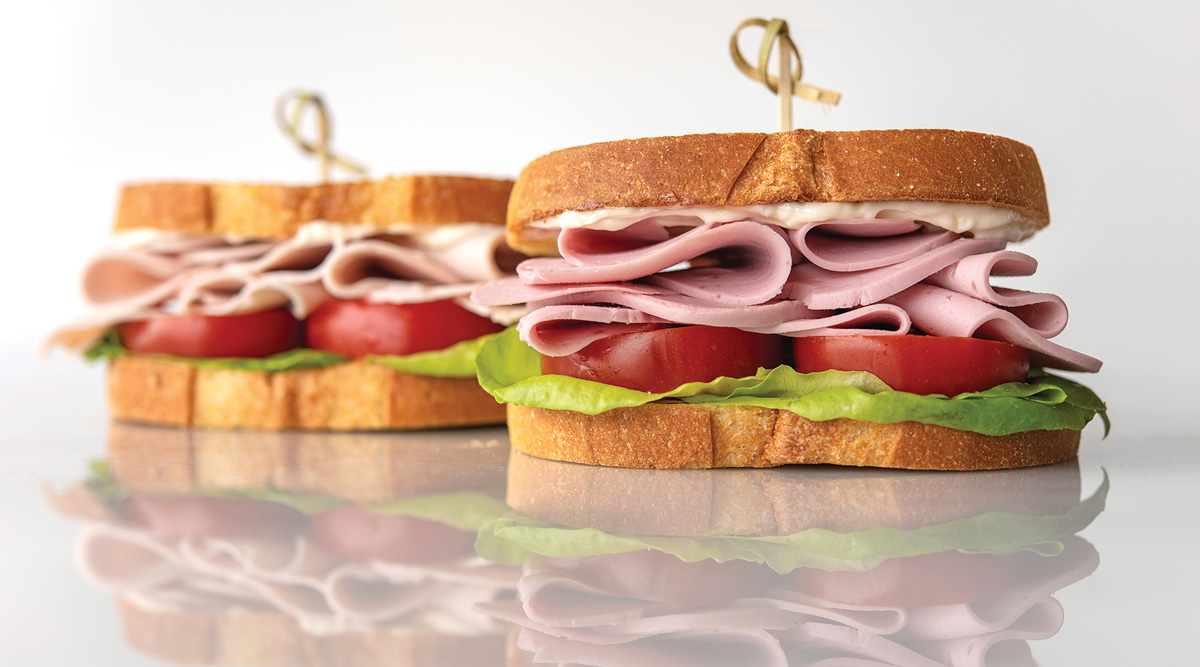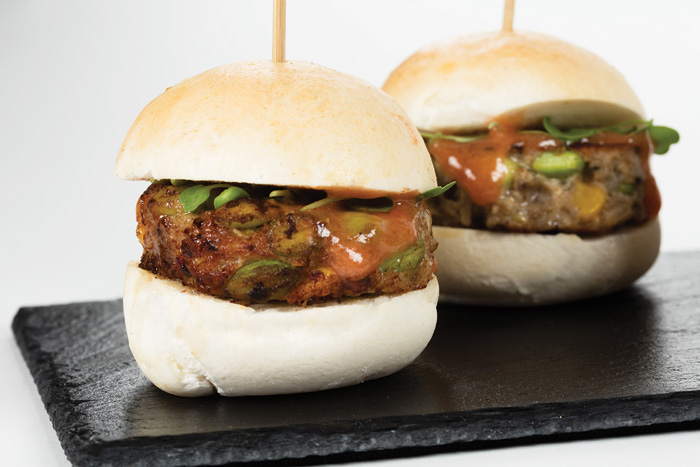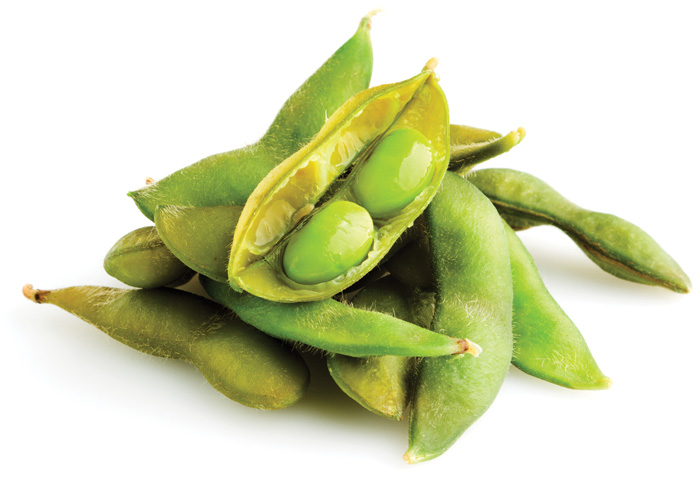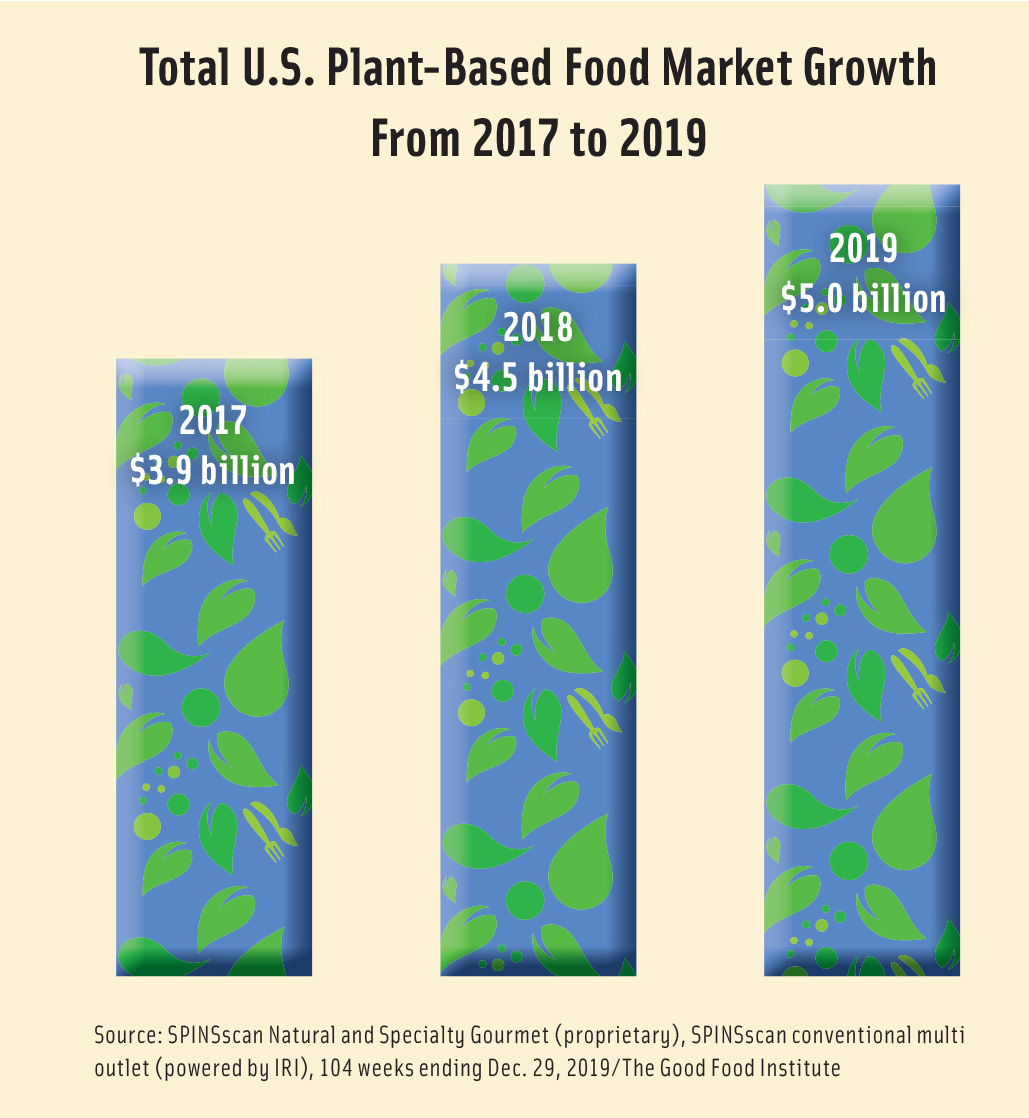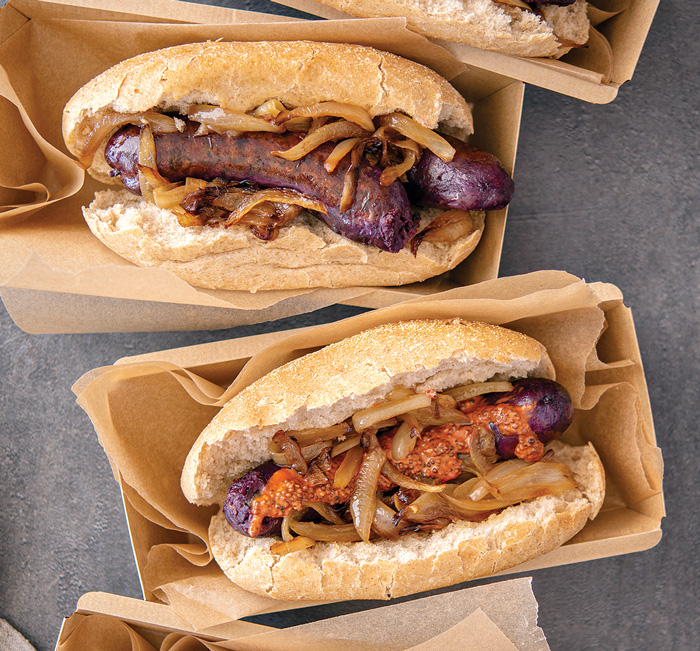Beyond Soy: Formulating Vegan and Vegetarian Foods
INGREDIENTS
As more consumers opt to eat vegetarian or vegan at least some of the time, their expectations for these food and beverage products are rising. Better taste, realistic texture and color, clean label, high protein, sustainability—the list of “must” attributes continues to lengthen.
“Consumers believe vegan/vegetarian products are healthier for them and the planet,” says Gregory Paul, NAFTA marketing leader for beverages and dairy at DuPont Nutrition & Biosciences. “Ingredient selection is just as important as calories and macronutrients—consumers are looking for authentic ingredients. ‘Free from’ claims are the most common positioning on plant-based and vegan products . . . [including] no artificial flavors, preservatives, colors, gluten-free, and dairy free. Non-GMO is also important. And in all cases, bonus points will go to products associated with ethical causes.”
“While early adopters of the plant-based movement may have been less critical of a plant-based product’s taste, today the consumer base has significantly grown—and with that growth has come the expectation of good taste and the ability to move to a plant-based diet without trade-offs,” adds Ryan Bracken, co-CEO of Merit Functional Foods, which supplies pea and canola protein ingredients.
Vegan/vegetarian products are attracting consumers of every stripe, from strict vegans to flexitarians who sometimes eat meat to hardcore omnivores; only 12% of plant-based product buyers describe themselves as vegetarians, according to a 2019 survey by the Hartman Group, a research and consulting firm. Plant-based milk is the top seller in the $5 billion plant-based foods category, followed by the red-hot plant-based meat segment with offerings like MorningStar Farms’ new vegan Incogmeato burger patties, bratwurst, Italian sausage, and chik’n nuggets made with non-GMO soy. Sales of frozen and refrigerated meat substitutes in major outlets (grocery, drug, mass market, military, and select club and dollar store retailers) jumped 42.8% to $837 million for the year ended May 17, 2020, according to data from market research firm IRI.
Plant-based dairy is also poised for growth with numerous categories seeing big dollar sales gains during the past two years, according to SPINS data reported by The Good Food Institute, including plant-based yogurt (+95.0%), plant-based creamer (+92.6%), and plant-based cheese (+50.8%). Looking to the future, investment firm UBS is projecting that U.S. sales of plant-based dairy products will hit $37.5 billion in 2025, and plant-based protein and meat alternatives will reach $85 billion in 2030.
The array of ingredients available for formulating new and improved vegan/vegetarian products, meanwhile, continues to expand for plant-based foods that directly replace animal products.
“Mimicking animal protein functionality and sensory, as well as cost in use, are the top challenges in [formulating] vegan and vegetarian products,” says Julie Emsing Mann, global plant protein program manager for Ingredion. “The gold standard, historical animal-based products, such as milk and meat, are based primarily on very specific protein sub-units from dairy protein and muscle proteins. [But] there have been exceptional developments in plant-based ingredients and supporting ingredients (hydrocolloids, fibers, fats) to build a complementary system that will replace and perform exceptionally well in key applications.”
Let’s take a look at some of the latest innovations in new and emerging plant-based protein ingredients and the specific issues involved in formulating vegetarian/vegan foods to meet consumers’ increasingly sophisticated demands for taste, texture, mouthfeel, color, nutrition, sustainability, and clean labels.
Soy Strengths
After decades of use in a wide variety of food products, soy is still tops among plant-based product developers and will likely remain so. Soy is the most common plant-based protein for food and beverage formulations globally, according to 2020 data from research firm Mintel, says Jacquelyn Schuh, product marketing director: alternative proteins at ADM. The company, which supplies soy and wheat protein ingredients, recently formed a joint venture with beef producer Marfrig to market plant-based food products in North and South America.
Soy protein’s ability to deliver real meat-like taste and texture has made it a go-to ingredient for superstars of the meat alternatives market. Last year, Impossible Foods reformulated its Impossible Burger, now available in about 1,000 U.S. supermarkets, to use textured soy protein rather than textured wheat protein, boosting nutrition and texture, according to the company. And in early April, Cargill launched a new line of private label plant-based patties and ground products—available in soy or pea formulations—for retail food and foodservice businesses.
“One challenge in formulating both dairy and meat alternatives is creating a product with a ‘complete’ protein profile,” says Melissa Machen, senior technical services specialist–plant protein at Cargill. “Animal proteins are good sources of complete proteins, whereas plant proteins are sometimes limited on specific amino acids. [But] soy protein is a functional and nutritionally complete protein based on its PDCAAS (protein digestibility corrected amino acid score).”
Among the functional benefits of soy protein are moisture and flavor retention, emulsifying properties, and texture enhancement in an array of food products.
“When formulating plant-based meat alternatives, texture challenges often stem from ingredient characteristics like insufficient solubility, gelling, and water-holding capacity,” Schuh says. “Soy protein and wheat gluten are among the best texture-enhancing ingredients available and are generally more readily available and cost-effective compared to other plant-protein ingredients.”
Soy, however, can present allergy concerns (it’s one of the “Big 8” allergens in the United States) and can contribute to flavor problems in some products. Blending different plant protein ingredients together can improve the sensory experience of a finished product while also boosting perceptions of health and wellness, says Schuh.
“For example, a product featuring both textured soy and pea protein can enable higher protein content while also delivering an elevated sensory experience in terms of flavor, aroma, mouthfeel, and visual appearance,” she says.
Pumped-Up Pea Proteins
Pea protein product launches have more than doubled in the past five years, according to 2020 data from Mintel, and for good reason. Pea is a versatile protein option without the allergy issues of soy or the gluten concerns of wheat ingredients. Hormel Ingredient Solutions, for example, is touting its new pea protein line of fully cooked traditional and Italian-style crumbles and uncooked ground as free from soy and allergens.
“Pea protein clearly stands out amidst the bevy of new plant proteins in the marketplace,” says Machen. “It’s still new enough that there’s a bit of luster and excitement around it, but it’s not so leading edge that it feels unfamiliar to consumers. It hits all the big consumer trends—non-GMO, high protein, vegan, plant-based, organic—yet still delivers the sensory characteristics and functionality that product developers must have to create great-tasting products.”
Formulating with pea protein can create issues of solubility, heat stability, and pH balance, however, says Merit’s Bracken. “This can often result in the addition of undesirable ingredients and ultimately affect the consumer’s experience,” he says. “Rather than using pea with proteins that negatively impact taste and texture to achieve a PDCAAS of 1.0, we have options that can achieve this target with great taste and texture results. With advances in our processing technology, the flavor profile characteristics have been improved as well as reducing the intensity of pea off-flavors in our protein powder ingredients, Peazazz.”
Cargill’s PURIS pea protein is sourced from yellow pea seed varieties that are specially selected to minimize the off-flavors normally attributed to pulses, says Machen. “In addition, it’s processed without the use of hexanes to bring out the best flavor possible,” she says. “PURIS pea protein is easy to use, designed for high solubility, excellent dispersibility, and optimum mouthfeel.”
Late last year, Kerry launched a pea protein hydrolysate ingredient developed for use in low-pH beverages such as waters, juices, and energy drinks. It’s the first vegan, allergen-free protein solution for low-pH drinks, designed to address the challenge of significant solubility, clarity, and stability issues that many proteins have when used in low-pH beverage applications, the company says. Those issues often mean stabilizers are required, which can present problems for manufacturers that seek clean labeling. ProDiem Refresh’s superior stability eliminates the need for stabilizers.
Kerry also has expanded its plant protein range with 12 new ingredients in its ProDiem and Hyprol lines that feature proteins from pea, rice, sunflower, or combinations of the three. Three of the new proteins are vegan, with a PDCAAS score of 1.0.
A new textured pea protein option from MGP Ingredients, ProTerra, is especially suited for use in vegetarian and vegan applications and offers important functional benefits, including good hydration capacity and time requirements. “ProTerra proteins not only mimic the appearance and fibrous texture of meat, but their enhanced texture and mouthfeel are important attributes in products developed for consumers who desire the sensory attributes of meat in a plant-based option,” said Ody Maningat, chief science officer and vice president of R&D, in a press release.
Fava Beans Pulse Ahead
Looking beyond pea protein, fava bean is one of an increasing number of pulses being tapped as protein sources. “There has been a growing trend in the last couple of years for pulse ingredients for meat alternatives, including pea, chickpea, lentil, and fava bean,” says Julie Prost, pilot plant manager and process engineer, Clextral USA. “These are great to work with because of their high-quality protein and the range of available options. Pulses are easily combined with other ingredients to create high-quality finished products with beneficial nutritional aspects.”
Pulses also are high in fiber, lower in fat, and low on the glycemic index.
Roquette added its first fava bean textured protein ingredient solution in late 2019, says Benjamin Voiry, head of marketing food, Europe. “Similar to our NUTRALYS Textured Pea Protein, the NUTRALYS Textured Fava Bean Protein is environmentally friendly, sustainable, non-GMO, and naturally exempt from gluten,” he says. “The fava bean has all the characteristics of becoming the next big thing in the plant-based protein food and beverage domain,” he adds.
ICL Food Specialties also offers both pea protein and fava bean protein designed for vegan, vegetarian, and hybrid meat applications. ROVITARIS PX 365 (pea) and ROVITARIS FBX 360 (fava bean) are both allergen-free, vegan, and non-GMO. When hydrated, the textured proteins form a fibrous, meat-like texture with a high water- and oil-binding capacity to provide excellent mouthfeel for products like nuggets, burgers, crumbles, emulsified systems such as sausages, and protein substitutes in canned soups and sauces.
Almond Joys
With a reputation as a “superfood,” almonds have long been the dominant force in plant-based nondairy milks. They are the highest in protein among tree nuts and are an excellent source of biotin, phosphorous, copper, magnesium, and manganese.
“Now, almonds are also benefiting from new interest as an all-natural and plant-based source of protein for a variety of different food and beverage applications,” says Laura Gerhard, director of strategy and marketing for Blue Diamond Almonds Global Ingredients Division.
Blue Diamond Almond Protein Powder can help address formulation challenges such as gritty texture or unappealing aftertaste that some plant-based protein sources can produce, says Gerhard. “Blue Diamond Almond Protein Powder’s high fiber and low fat content contributes to a mild and balanced flavor profile,” she says. “Within blends, [it] can aid in diluting the ‘earthy’ notes and textures contributed by other protein sources. Additionally, while almonds are one of the firmer nut types, the powder produced from the almonds can be milled to an ultra-fine granulation to produce a smoother mouthfeel than many other plant-based proteins.”
Almond protein powder is ideal for blending in beverage formulations such as smoothies and shakes, says Gerhard, and can also be blended with Blue Diamond Almond Flour to create fortified versions of baked goods.
Clean Canola
Another emerging plant protein is canola, which offers a clean flavor profile, high solubility across the pH range, and unique functional properties such as gelling and binding.
Merit Functional Foods is the first supplier globally to provide a high-purity, food grade non-GMO canola protein through its Puratein line of canola protein ingredients. The canola protein isolate comprises mainly globulin proteins, with functional properties of emulsification, gel formation, thickening, formation of heat-stable foams, and water and ingredient binding. Puratein applications include dressings, sauces, meat substitutes, baked goods, and protein bars.
“Additionally, our unique MeritPro lineup of high-solubility pea and canola blends has proven extremely effective in developing dairy alternatives that look, taste, and feel like dairy,” says Bracken. Merit Functional Foods, along with Burcon NutraScience, recently announced a joint development agreement with Nestlé to develop and commercialize Merit’s novel plant proteins for use in Nestlé’s plant-based foods and beverages.
“For applications like nondairy beverages, MeritPro has excellent solubility, low color at high fortification levels, and neutral flavor,” he adds. “For nondairy ice cream applications, it has a high foaming capacity and stability that provides formulators an alternative to egg albumen and whey protein isolates.”
Potato Appeal
A high nutritional profile and clean label appeal make potato protein a natural for vegan and vegetarian formulations, says Helma Slierendrecht, senior technical sales manager, North America, at Denmark-based KMC.
“The potato has a very friendly image,” she says. “Everybody knows potatoes, and some of the emerging proteins are coming from products that [consumers] don’t know.”
KMC’s new Protafy potato protein, which is distributed in the United States by MGB Ingredients, uses potatoes grown only in Denmark, where there is no commercial cultivation of GMO crops. Protafy has the highest DIAAS (digestible indispensable amino acid score) among plant-based proteins, and it is naturally rich in branched-chain amino acids with a value comparable to that of whey. With a mild potato taste, low water binding capacity, insolubility, high digestibility, and high heat stability, Protafy is suitable for use in snacks, bars, cookies, baked products, pasta, and noodles.
Next month’s Ingredients section will focus on seasonings.
Elizabeth Brewster is a freelance writer based in Evanston, Ill. ([email protected]).


